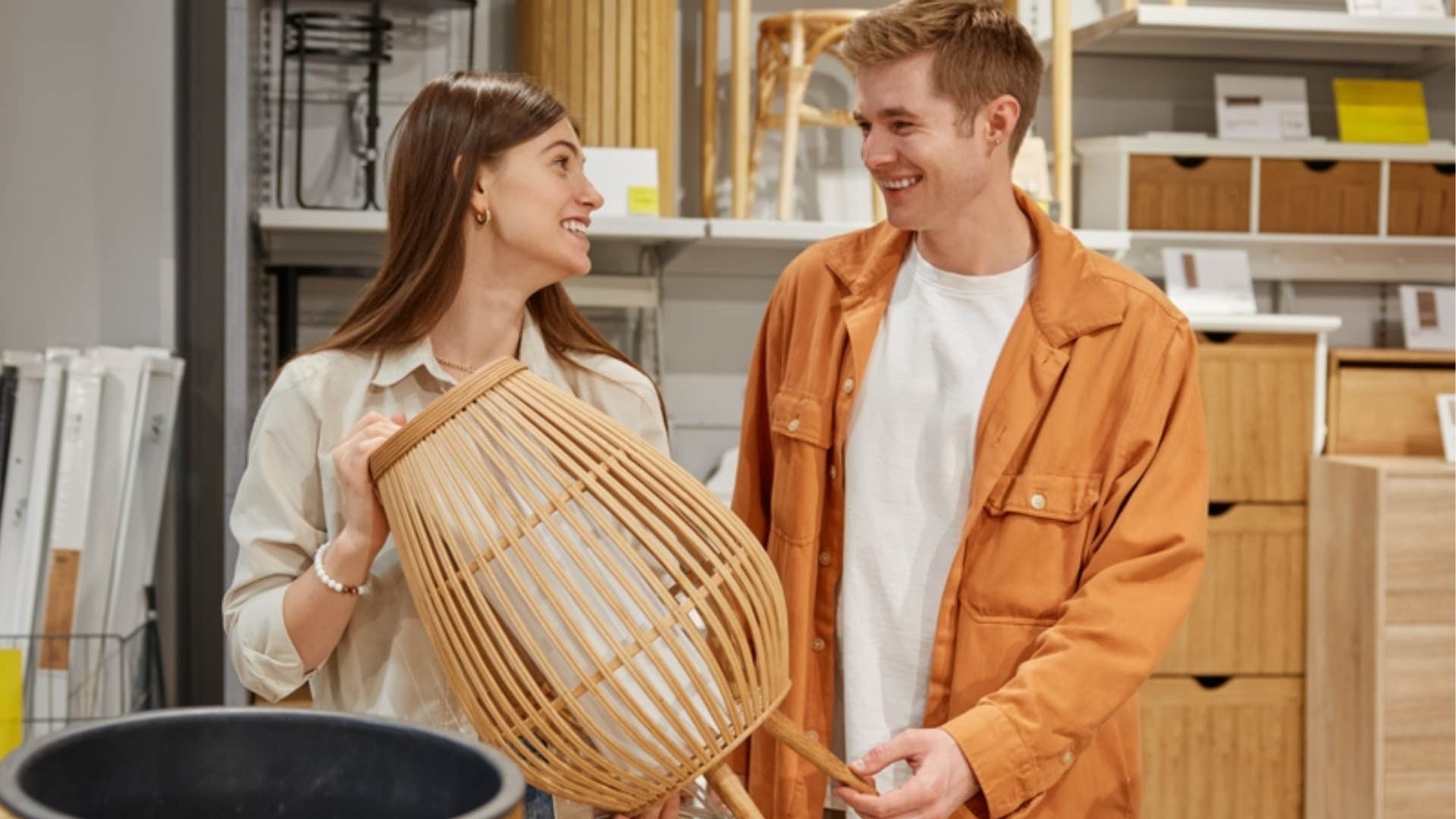11 Common Things Frugal People Refuse To Spend Money On No Matter What
Frugality isn't always a negative thing.
 Julia Zavalishina | Shutterstock
Julia Zavalishina | Shutterstock There are two types of people in the world: those who spend money as if it's limitless, and those who save so much they could stockpile it. Frugal people will hold onto their money and avoid spending it on anything that isn't completely necessary. While some of these saving choices are practical, others believe that frugal people need to live a little.
But frugality isn't always a bad thing. Accountant and financial planner Tom Corley, who studied wealthy people's habits for five years, determined that most of their wealth was built by strict frugality and only spending on the absolute necessities. This meant cutting back on the ordinary spending habits many of us don't even realize we're engaging in. Still, there are some common things that frugal people will not spend their money on no matter what.
Here are 11 common things frugal people refuse to buy no matter what
1. Brand-name products
 Zalchar_8 | Shutterstock
Zalchar_8 | Shutterstock
Whether it be Coca-Cola or Nike apparel, one of the common things frugal people refuse to buy no matter what are brand-name products. Most brands will increase the prices of their products, especially if they are popular and are aware that customers will spend whatever it takes to purchase them.
Brand-name products are perceived as higher quality, compared to generic brands that don't come with a status symbol. However in many cases, the functional differences between brand-name and generic products are minimal. Frugal people know this and often opt for store-brand products to save money.
2. Ordering coffee
 ViDl Studio | Shutterstock
ViDl Studio | Shutterstock
Some of us cannot even imagine not starting off our day without a coffee from our favorite local cafe on the way to work, or treating ourselves to a delicious cup on the weekend. But many of us fail to realize the toll these drinks can take on our bank accounts.
According to CNET, the cost of a Starbucks drink per year can range from $462.50 to $1,187.50, depending on the drink, how often you order, and the size of the coffee. They estimate that people can save around $300 to $615 per year just by making coffee at home.
So even if they may not be able to brew their coffees as well as an experienced barista, frugal people know they will save money by investing in a Keurig and making their drinks at home.
3. New cars
 ViDl Studio | Shutterstock
ViDl Studio | Shutterstock
In January 2024, the average cost of purchasing a new car in the United States was $47,338. Of course, this price tag doesn't include insurance, registration fees and repairs. But for frugal people who often choose to buy a used car instead of a new car, the average price was around $27,297 in 2024, a significantly cheaper price.
By purchasing used cars or deciding instead to lease, this minimizes all of the depreciation costs that come with buying a brand new car, as forking over a large sum of money at once is one of the common things frugal people refuse to do.
4. Fast food
 Ground Picture | Shutterstock
Ground Picture | Shutterstock
Even if it may involve more time to prepare meals on busy nights, frugal people generally do everything they can to avoid having to spend money on fast food. Even if they may seem like cheap and convenient meals, the cost of fast food can quickly add up.
According to Drive Research, in 2023, Americans spent around $349 billion on fast food, adding up to about $148 per person per month, or $1,776 per person per year. And when getting fast food becomes a weekly habit, the costs can grow exponentially.
Instead of ordering out or going through the drive-thru, frugal people shop at the grocery store and then use what they have in their daily meals. And, over time, this can save them a lot of money.
5. Subscription services
 fizkes | Shutterstock
fizkes | Shutterstock
Frugal people aren't fooled by streaming services or magazines asking them if they'd like to pay to subscribe for exclusive content. The truth is, most people will likely only visit a certain platform a handful of times and forget all about what they even subscribed to.
According to Telecompaper, at least one-third of Americans pay for subscriptions they don't even use. They usually sign up for a free trial and forget to cancel it, leading to a build up of costs they may not even be aware of.
Frugal people often keep track of their expenses and would likely notice a subscription they weren't taking advantage of. They are all about saving money, so for them, that means canceling "luxury" subscriptions.
6. Impulse buys
 maxbelchenko | Shutterstock
maxbelchenko | Shutterstock
Frugal people thoroughly think about their purchases before making them. A trip to a store like Target or Walmart never includes any extras, and they especially avoid buying things on a whim, especially last-minute purchases at the checkout.
They often abide by a very strict budget, only purchasing the necessities. One study from the Journal of Advertising Research found that impulse purchases "occur when there is a sudden and strong emotional desire, which arises from a reactive behavior that is characterized by low cognitive control," while additional research from 2018 determined that spontaneous impulse buying "can be explained by the immediate gratification it provides to the buyer."
As such, random items not on their list are common things frugal people refuse to buy no matter what. They consider the future implications of their spending, prioritizing saving for bigger goals over immediate gratification.
7. Fancy home decor
 Nomad_Soul | Shutterstock
Nomad_Soul | Shutterstock
When people who like to spend money walk into stores where there are many options and items available to them, especially stores like Home Goods or TJMaxx, it's hard to resist the temptation. Whether it's a cute flower pot shaped like a dog or a cookie jar that would look perfect in the kitchen, they are quick to rationalize that they need these items.
However, frugal people walk right past these exact items without a second thought. Most of them are only interested in buying home decor that is absolutely necessary, like chairs to sit in or shower curtains to hang. They are far less intrigued by aesthetics of their home, and are more focused on how they can make it budget-friendly.
8. Gym memberships
 Mladen Zivkovic | Shutterstock
Mladen Zivkovic | Shutterstock
It seems as if every year on January 1, droves of new gym-goers sign up for a membership to get their fitness goals on track for the new year. While they may start out strong at first, by February, their trips to the gym usually fizzle out, but they still pay membership fees even if they no longer show up.
It's estimated that 67% of gym goers don't use their memberships regularly; 18% of them only go to the gym once a week, but are spending hundreds of dollars annually on these memberships. But for frugal people, they stay far away from gyms, taking walks outside or doing workout videos at home, all for free.
9. Cosmetic procedures
 Prostock-studio | Shutterstock
Prostock-studio | Shutterstock
Data from The Aesthetic Society found that Americans spent more than $11.8 billion on aesthetic procedures in 2022, with women representing 95% of all procedures. Considering these procedures are generally not covered by health insurance, people use funds right from their pockets to pay for them.
But because cosmetic procedures are one of the common things frugal people refuse to buy no matter what, they end up saving a lot of time and money. They steer clear of expenses in the medical world that aren't absolutely necessary. If there's something about their bodies they wish to change, they opt for DIY solutions or low-cost alternatives.
10. Gift wrap
 Pixel-Shot | Shutterstock
Pixel-Shot | Shutterstock
Even though it may not seem that expensive, frugal people may prefer to use everyday products in their own homes to wrap gifts instead of buying gift wrapping paper. That means they opt for old newspapers, repurpose used gift bags, or don't wrap gifts at all, rationalizing that wrapping paper is just for aesthetic purposes.
According to San Diego State University, it's actually quite harmful to use gift wrap. Around 2.6 billion pounds of wrapping paper are discarded each year, and are often coated with dyes and glitter that make them impossible to recycle, instead ending up in landfills. Frugal people choose instead to save money year-round by using what they have.
11. Vacations
 adriaticfoto | Shutterstock
adriaticfoto | Shutterstock
While they are a perfect opportunity to unwind and recharge your brain, spending money on vacations is not an option for frugal people, given the fact that they are an entirely optional part of life. To them, it's not the trip itself, but all the added fees.
The cost of a vacation doesn't just consist of hotel fees. It also includes flights, appropriate attire depending on where you're traveling to, meals, transportation to and from the airport, and any additional excursions you may want to experience. In fact, according to vacation real estate website Pacaso, the average cost for one person to go on vacation in 2024 was about $1,986 per week.
Rather than shelling out thousands of dollars for a short period of time, frugal individuals will explore local destinations in their area for day excursions, whether it's visiting a hiking trail, a museum, or opting for a "staycation" at home.
Megan Quinn is a staff writer with a bachelor's degree in English and a minor in Creative Writing. She covers news and lifestyle topics that focus on justice in the workplace, personal relationships, parenting debates, and the human experience.
